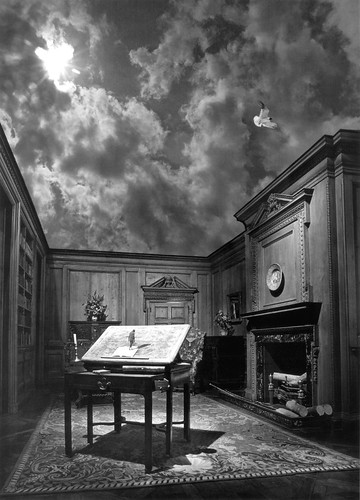Amy Stein's presentation of both her personal story and her work was a great way to keep up the momentum set in motion by Paul Shambroom (I'll skip the comparison to the inflated mumblings of Alex Pearlstein). Stein took an unusual route to the world of Fine Art Photography, stopping along the way to pick up a BS and MS in Political Science, but this had the added benefit of informing her work, and leaving little room for pretense in her self presentation. She offered up anecdotes of her struggles and doubts along the way which led to an overall inspiring artist lecture.
One aspect in particular that I could relate to regarding Stein's process, was her need for an emotional and creative outlet when working on a particularly structured series. Her "Domesticated" series, staged images featuring some of taxidermy's finest works, explores the boundary and tension between the built environment and the natural world; she describes these scenes as "false natures." Here she has clearly found her niche, but the process is taxing (no pun intended), all of the elements must be pre-visualized and brought together before production can begin.
When Stein feels herself hitting a wall, she hits the road. "Stranded" is a series of roadside cars and their drivers nationwide, incidentally, a sort of socioeconomic profile of the country spanning the second half of the Bush administration. I can see why working on this project offers Stein a bit of relief, once she happens upon someone in need of roadside assistance, all of the elements are there: the physical props of course, but the emotions too, the frustration and vulnerability her photographs capture is incredibly tangible.
Though in many ways these particular series seem diametrical opposites, they both offer a thought provoking portrait of the human condition, in their own way. Stein herself referred to one series as taking a temperature reading of our society right now, I think she hit on this fundamental necessity of photography in both, with great success.


















